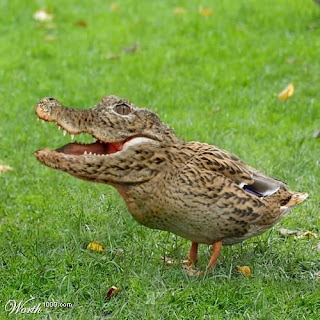
1. Structural evidences : The extensive evidence in support of evolution comes from the structural similarities. The related organisms possess homologous structures because of common ancestry. Among the vertebrate, from frog to man, the vertebral column, eyes, ears, brain and the digestive system are constructed on the same basic plan which suggests common ancestry. In plants, the structural similarities in the type of venation, shape of corolla, cohesion or adhesion of stamens among a group of plants suggest common ancestry.
2. Anatomical Evidences : The comparative anatomy of plants and animals provides the strong evidence for organic evolution. The forelimbs of many vertebrates such as amphibians, lizards, birds, bats and man are constructed on the basic plans and includes the same bones in the same positions but they have become morphologically different in the course of evolution. The organs which are similar in structures and origin but performs different function are called homologous organs and the organs which have similar functions but different origin is called analogous organs. for eg - wings of insects and vertebrates. similarly, the study of xylem, development of stele, nature of tracheids and vessels among higher cryptogams, gymnosperms and angiosperms provides additional support to the theory of evolution.
3. Palaeontological Evidences : Palantology is the study of fossils of anicient plants and animals. Fossils is defined as the remains of ancient plants and animals preserved in the rocks or different layers of earth. The study of fossils provided most convincing and direct evidence of evolution. This help us to trace the facts related with the origin, evolution, relationship and increasing complexity etc of different plants and animals in different geological eras of the earth. The surface of the earth consists of layers or strata of rocks formed in different periods. The earliest formed rocks shows most primitive form of life and later form rocks shows fossils of more complex types. Animals are better preserved as fossils as compared to plants and helps in drawing correct conclusions about origin of modern vertebrates. The age of fossils can be determined either by radioactive carbon dating or by the amount lead in the rocks.
4.Evidence from physiology and biochemistry :
i. Protoplasm chemistry : The protoplasm consists of substance like proteins, lipids, carbohydrates, nucleic acids and water, although show great diversity in the form and functions according to the biochemical analysis of the living organisms.This suggests that most of the fundamental property of living things remained intact and variations in certain essential areas appeared according to the use and needs.
ii. Chromosome chemistry : The common structure of chromosomes among the diverse group of organisms suggest a common origin of most of the living organisms.
iii. Enzyme similarities : enzymes such as trypsin is similar and found in animals ranging from protozoa to mammals , whereas amylase is found from sponges to mammals.
iv. Haemin Crystals : The haemoglobin in blood precipitates in crystals when it is treated with glacial acetic acid, they are called haemin crystals. Crystals of all members of a species are similar in shape, size and structure but differ from those of other species. They are different with the classification of animals and confirms their phylogenetic relationships.
v. Hormonal Similarities : All vertebrates show close similarity in their hormones . eg- thyroid hormones is commonly found in all vertebrates. Deficiency of this hormones in frog can be corrected by feeding them on mammalian thyroid tissues which suggests a common ancestry of vertebrates.
vi. Serological test : This test is used in measuring the degree of relationship among different groups of animals and is helpful in establishing their affinities. The thin liquids that remains from blood on clotting is called serum, it contains specific proteins. If the blood serum of an animal injected into blood stream of some other animals, antibodies against the antigens of injected blood are produced. These antibodies destroy the antigens of injected blood serum. Serological tests have shown that man is more related to chimpanzee than to apes, gorilla and baboon. similarly, cats, dogs and bears are closely related, this test can also be done in plants.
5. Evidence from Genetics : In search of new varieties, man is involved in selecting and breeding animals and plants for his own use due to this new species are evolved. Thus the selection and interbreeding of domesticated animals and plants for thousand of years provide model as to how some evolutionary processes operate in nature. Organisms changes with changing environment and many of these variations are heritable. The most important genetic phenomenon that played main role in evolution are recombination and mutation. They generate diversity on which natural selection theory works.
6. Evidences from vestigial organs : Vestigial organs or Rudimentary organs are the reduced and functionally useless structures of plants and animals. These organs were functional and useful in ancestral forms but due to changes in environment and mode of life they become reduced and function less. There are large number of vestigial organs in man. The muscles of the ears which moves the pinna in other mammals like horse are found in reduced form in man, Vermiform appendix which is well develop in herbivorous mammals is present in small diverticulum in man, A fold of the skin in the corner of human eye represents nictitating membranes of reptiles and birds. In kiwi a flightless bird of new zealand the feathers are reduced to almost hair-like and wings are reduced and become useless organs. caudal vertebra which develops tail are present as vestigial organ in man. In plants the abortive stamens of Labiatae and abortive pistillodes of male flowers of cucurbitaceae are well known example of rudimentary structures. Similarly in some member of family compositae, the ray florets have an abortive pistil devoid of any stigma.
No comments:
Post a Comment